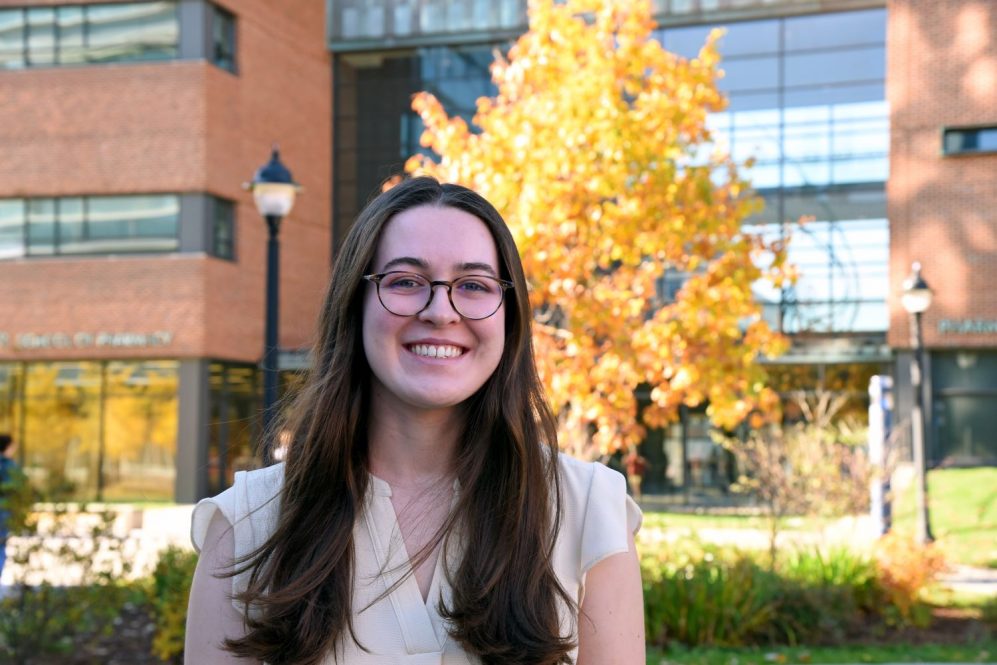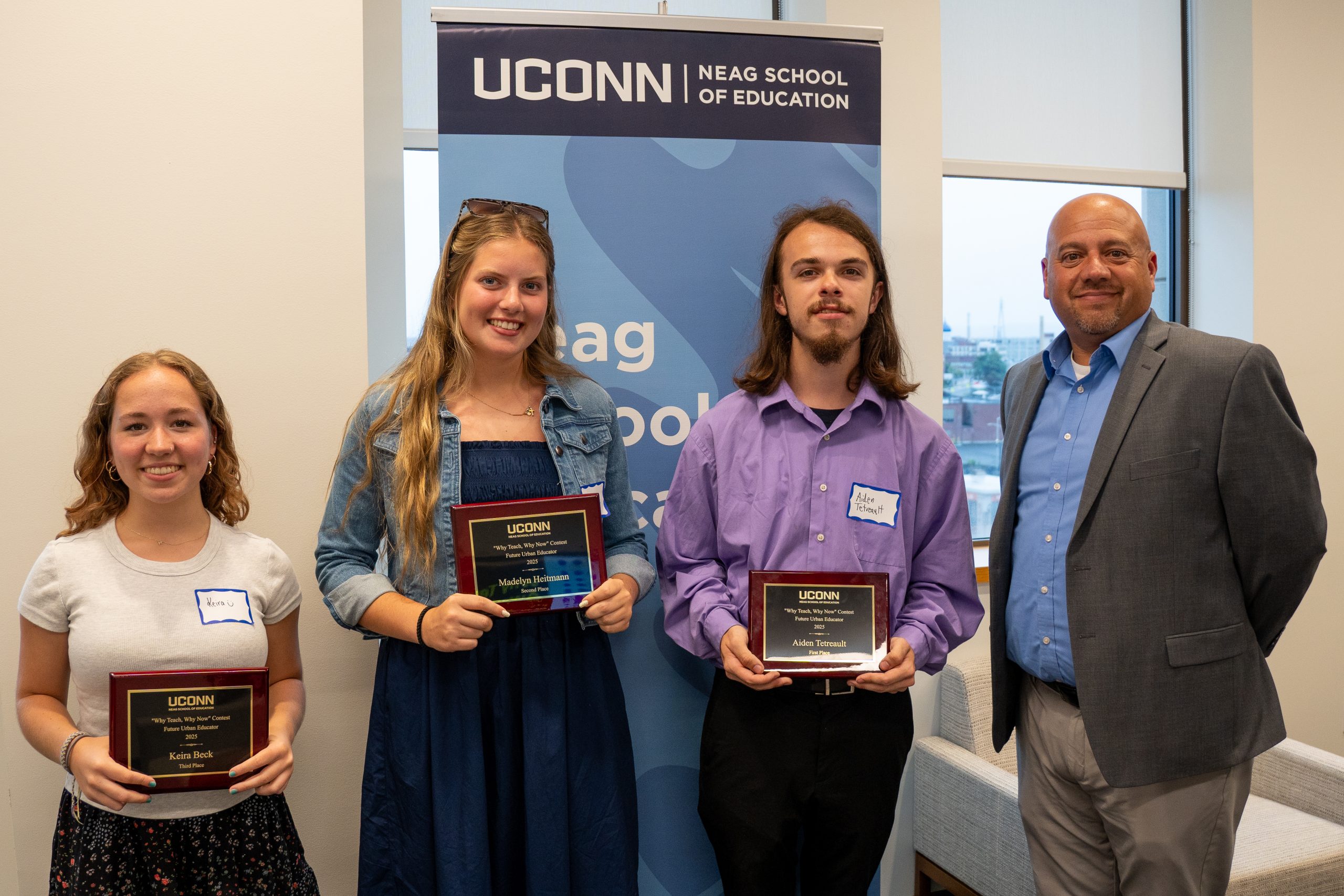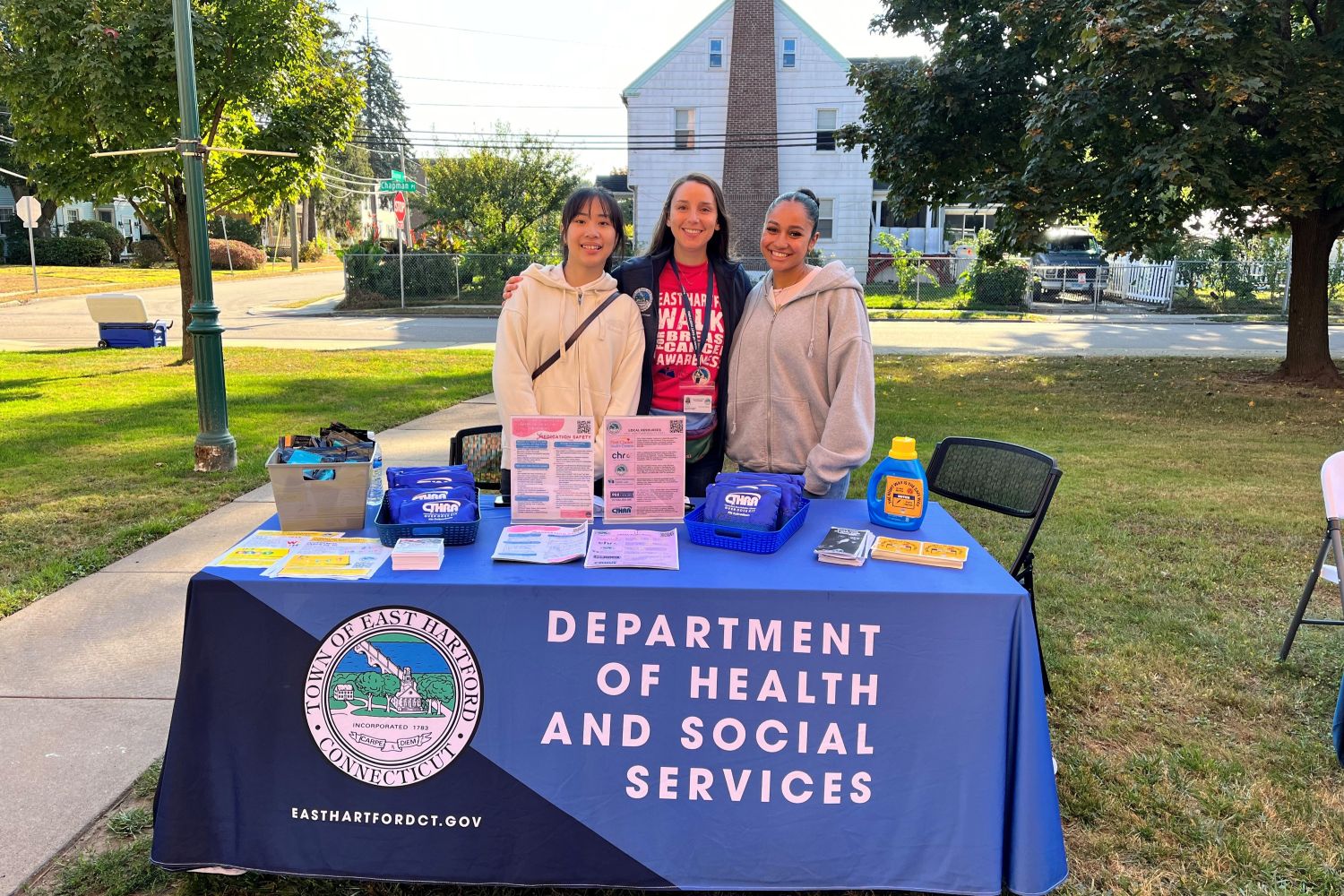As a college student, Noelle Maloney ‘23 (CAHNR) doesn’t have an obvious reason to worry about whooping cough, a common illness that can affect both children and adults. But because of a unique summer research opportunity, she not only became an expert on the growing health concern, she was part of a research team helping to develop new vaccine options.
Maloney, a pathobiology major, knew she was interested in research, especially after taking a class on emerging infectious diseases with Steve Szczepanek, associate professor of pathobiology.
“I picked that project based on my interest in learning about vaccine-preventable diseases reemerging,” Maloney says.
When her advisor Paulo Verardi, associate professor, and department head of pathobiology, encouraged her to apply for summer research opportunities, she found one that was right up her alley and close to home. Maloney earned a spot at the Wadsworth Center in Albany, part of the New York State Department of Health. Originally from the Albany area, Maloney knew people who had done research at the prestigious institution and reached out to Nicholas Mantis, the chief of microbial pathogenesis and immunology, and he accepted her into his lab for the summer.
In Mantis’ lab, Maloney got hands-on experience studying a vaccine for Bordetella pertussis, the bacteria that causes whooping cough.
“It was really enjoyable, and it definitely gave me experience I didn’t think I would be able to get in just 10 weeks, especially learning how to work with mice and work with an infectious bacterium like Bordetella pertussis,” Maloney says.
The vaccine for whooping cough has been regularly administered to children in the U.S. since the 1940s. This caused whooping cough cases to hit a low in the 1970s. The CDC reported only 1,730 new cases in 1980.
However, cases of whooping cough have been increasing in the U.S. in recent years, with a notable outbreak in 2012, seeing more than 40,000 cases. This is due to decreases in vaccination rates alongside the rise of vaccine-resistant strains of whooping cough, creating the need for updated vaccines.
There are two kinds of whooping cough vaccines: acellular vaccines, which use purified proteins from Bordetella pertussis, and whole cell vaccines, which use killed bacteria.
Acellular vaccines became more popular due to the perception that they had fewer side effects than the whole cell vaccines. However, the protection provided by these vaccines does not last as long, and the bacteria may be developing resistance to them.
Whole cell vaccines are more affordable, robust, and provide more lasting protection against Bordetella pertussis, making the development of a new whole cell vaccine a promising avenue for research.
Maloney used ELISA and Luminex assays to assess the immune response of mice to whole cell vaccination. With the Luminex assay, magnetic beads latch onto specific antigens of interest (in this case, Bordetella pertussis antigens). Then, if antibodies to fight these antigens were present, they would bind to the beads and can be detected with fluorescent markers. The immune responses were then related to the clearance of bacteria from the lungs of the mice to assess the protection provided by different vaccine samples.
The lab found that anti-pertactin antibodies were good indicators of vaccine-provided immunity. Pertactin is a virulence factor of Bordetella pertussis that contributes to the bacteria’s ability to overcome the body’s immune response when infected.
These findings are an important step in the development of an updated vaccine. Maloney’s work helped identify a reliable way to measure vaccine efficacy.
Maloney says her experience at the Wadsworth center allowed her to gain new laboratory skills. Maloney also plans to use this project for her honor’s thesis at UConn, and she is interested in research as well as medical careers after graduation.
“Getting exposure to research helped me evaluate whether I wanted to do research in the future and research is still interesting to me, but I am also interested in other health related fields,” Maloney says.
One aspect of the research experience Maloney says she enjoyed most was working with scientists and postdoctoral fellows from different academic and professional backgrounds.
“Being able to defer to other people and share ideas is really valuable,” Maloney says. “I feel like some people think of working in a lab as isolating and antisocial. But the lab I was in was a really good environment and we were able to collaborate well.”
Follow UConn CAHNR on social media



